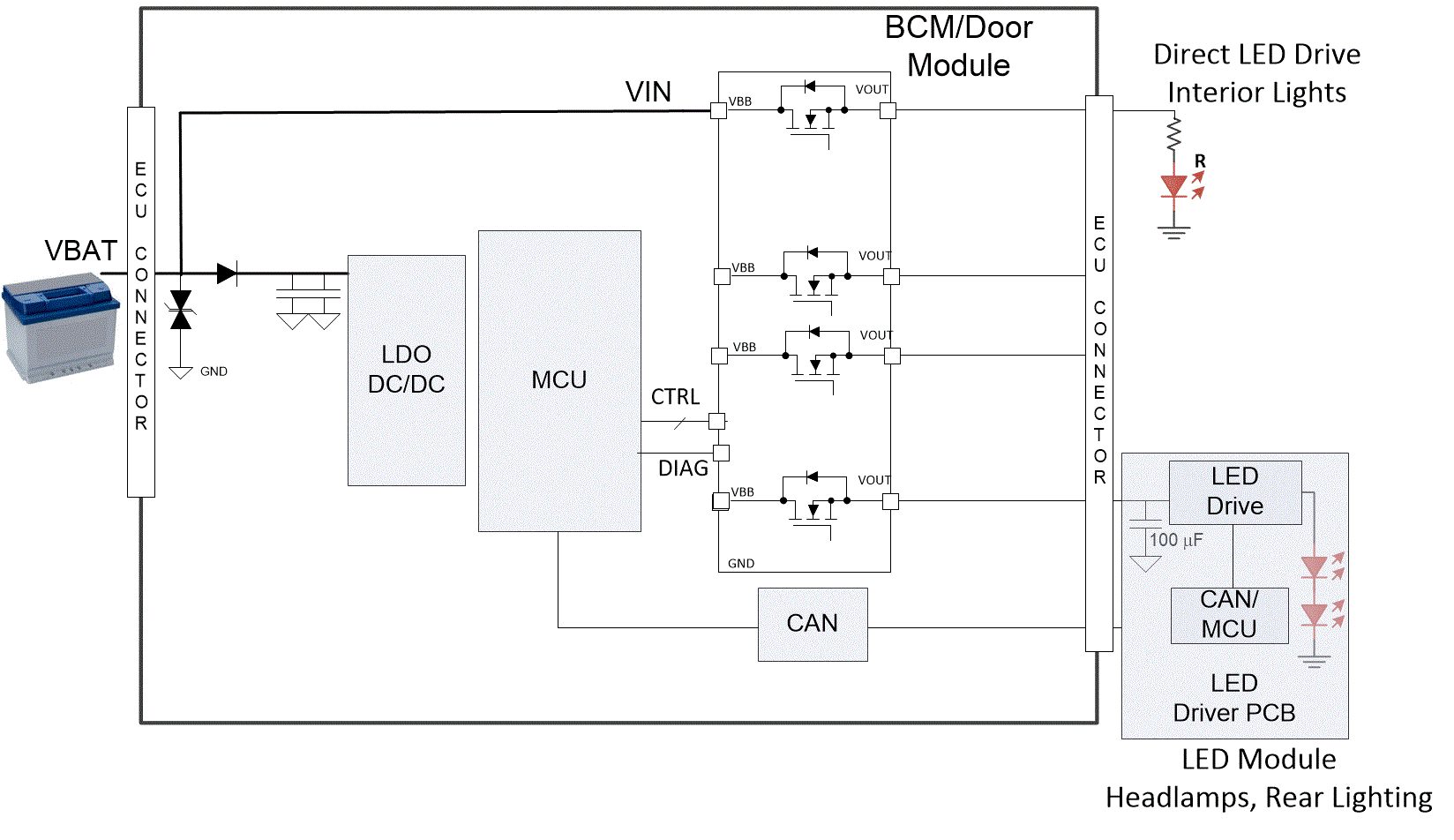SLVAE30E February 2021 – March 2021 TPS1H000-Q1 , TPS1H100-Q1 , TPS1H200A-Q1 , TPS1HA08-Q1 , TPS25200-Q1 , TPS27S100 , TPS2H000-Q1 , TPS2H160-Q1 , TPS2HB16-Q1 , TPS2HB35-Q1 , TPS2HB50-Q1 , TPS4H000-Q1 , TPS4H160-Q1
- Trademarks
- 1Introduction
- 2Driving Resistive Loads
- 3Driving Capacitive Loads
- 4Driving Inductive Loads
- 5Driving LED Loads
- 6Appendix
- 7References
- 8Revision History
5.2 Application Examples
A typical application that requires a Smart High Side Switch driving various types of LED lighting loads is shown in Figure 5-1. The LED loads fall into two broad categories:
- LED Direct Drive
- LED Module (with or without a separate MCU)
 Figure 5-1 Application Examples of Smart High Side Switches Driving LED Loads
Figure 5-1 Application Examples of Smart High Side Switches Driving LED LoadsThe direct LED drive offers a cheaper solution with less control while the LED module offers a constant current solution for a more accurate LED drive. Automotive systems are increasingly using LEDs to replace traditional bulbs, whether in head lights, interior lighting, or heads-up-displays. In industrial applications, LEDs are regularly used as indicators or lighting. The choice between direct LED driving or an LED module will depend on the specific application requirements. In either case the LED will require a Smart High Side Switch to provide power and diagnostic functionality.